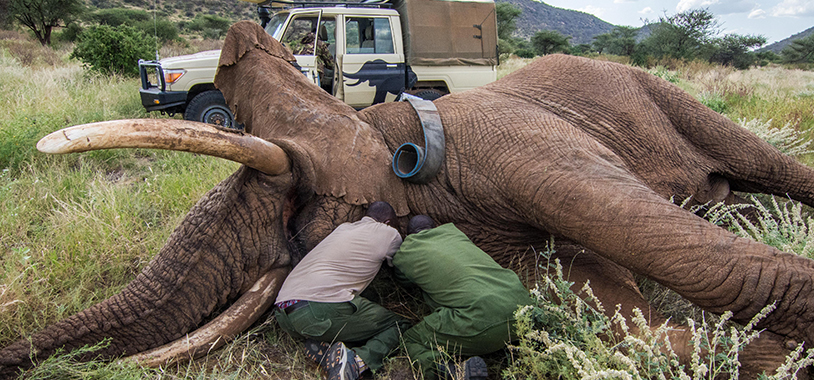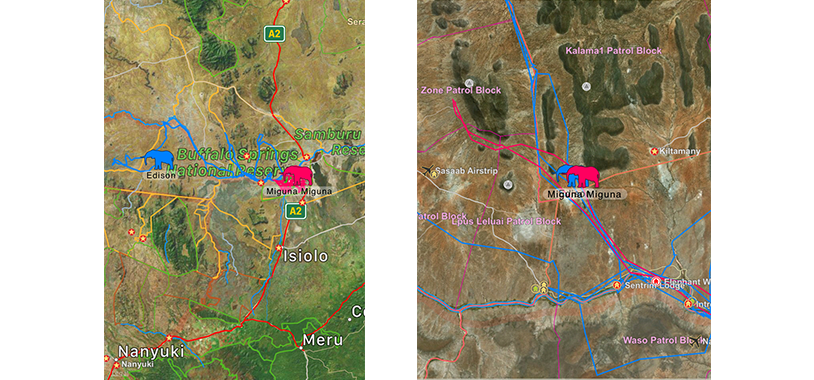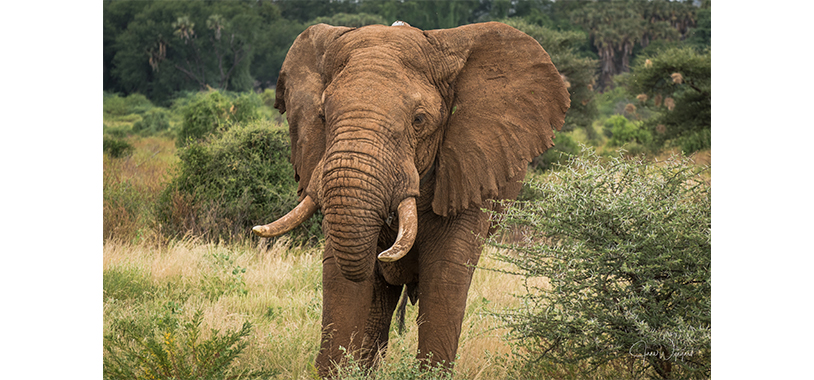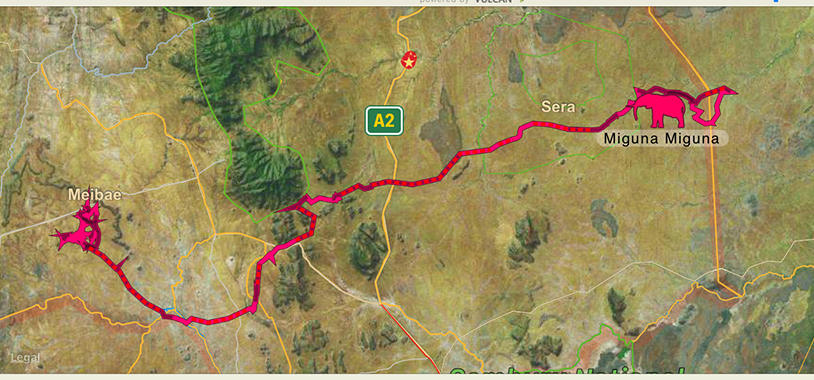As elephants gathered in huge numbers in Samburu National Reserve recently, one elephant in particular stood out. An enormous bull called Miguna Miguna had arrived out of the blue, begun chasing females, intimidating other bulls and squaring up to our vehicles.
We hadn’t seen Miguna in Samburu for more than two years. Where had he been in that time? How was he moving through the vast and crowded Northern Kenya landscape and keeping safe from poachers and conflict? What could he teach us about the ranging patterns of bull elephants and habitat connectivity?
We’ve been tracking elephants for more than 25 years and remain at the forefront of this field. Our founder Dr Iain Douglas-Hamilton, first pioneered the use of radio collars in the 1960s and we currently have data from 400 elephants across the continent flowing through our tracking systems.
Tracking elephants with technology night and day helps us understand their lives, decisions and needs and opens a rare window into their minds. The data provides us with information to better understand elephant movements, guide law enforcement and protect wildlife connectivity in the face of future infrastructure development and landscape change. A big focus of our work is to try and future-proof landscapes by incorporating elephant needs into infrastructure planning.
Over the years we’ve seen lone bull elephants trek for miles over open and dangerous landscape, following the paths of their ancestors or even forging new routes. There was Morgan who marched to Somalia and back in 2016; the famous Kenyan elder, Matt, who roamed the longest distance than any other elephant in Kenya and the legendary Mountain Bull from the slopes of Mt Kenya.
Unfortunately many of these iconic, adventurous males are now gone – either killed by poachers or dead from natural causes; their epic journeys assigned to history.
With Miguna now in Samburu National Reserve, we felt it was a prime opportunity to deploy a satellite collar on him and find out how the next generation of bulls were navigating the landscape.
At 38 years old Miguna is a tank of an elephant – all muscle, huge tusks, big head and an even bigger attitude. Collaring him was not going to be easy. For starters, we had to ensure the 14 foot of machine belting that held the GIS unit in place would fit around his giant neck. In musth, his swollen glands had made his head and neck even larger. Fortunately we’ve collared many big bulls in the past so were well prepared for any eventuality.
Fortunately the darting process was simple and efficient with Kenya Wildlife Service vet, Dr Matthew Muthinda, taking a clean shot. Miguna jumped forward, stared at our vehicles and then carried on walking before quietly toppling over and starting to snore.
We leapt into action, pouring water on his body to keep him cool, collecting hair and tissue samples and working the collar underneath his gigantic head.
In the end it took our team almost half an hour to fit the collar. We had to use a car jack to lift Miguna’s enormous head off the ground so we could get the collar beneath his supersize neck. Some of the team ended up with badly blistered hands, others were covered in sweat but it was well worth the effort. The reversal drug was administered, Miguna stood up, stared at us again and then wandered off not seemingly too bothered by the ‘pendant’ around his neck.
It wasn’t long before his collar started pinging back some interesting data.
We could see from his tracking data that he wasted no time in asserting his authority. He started shadowing another collared bull elephant called Edison. Edison isn’t usually bothered by other bull elephants and once even drove the mighty bull, Matt, out of the park. However judging by his behaviour, as seen on our tracking app, he didn’t seem too keen to hang around Miguna. Not long after their paths crossed, Edison left the reserve.
Miguna spent a couple of weeks chasing females and was last seen standing quietly alone on the other side of the river. Our Head of Field Operations, David Daballen, who was part of the team that collared him, thinks Miguna will soon come out of musth and head off again. This time however we’ll be able to follow his tracks on our app, learn more about the decisions he makes and use this information to help better protect other elephants just like him.
UPDATE: Just four months after being collared, Miguna Miguna surprised our researchers by making an extraordinary five-day dash from Oldonyiro in Northern Kenya to Sera – a journey of more than 124km. Miguna was last seen in musth in the company of several female elephants in Samburu. Afterwards, he headed west to Meibae, in Oldonyiro where his movements slowed. He then spent three months resting, no doubt enjoying a well-deserved holiday after his romantic escapades. We thought he’d stay put when suddenly on October 22 he left Meibae, streaking north-east across some open and dangerous landscape. You can see his movements in pink on our tracking app (pictured). We can’t be sure of his motives but presumably, the recent rains are involved.
Photos by Jane Wynyard





